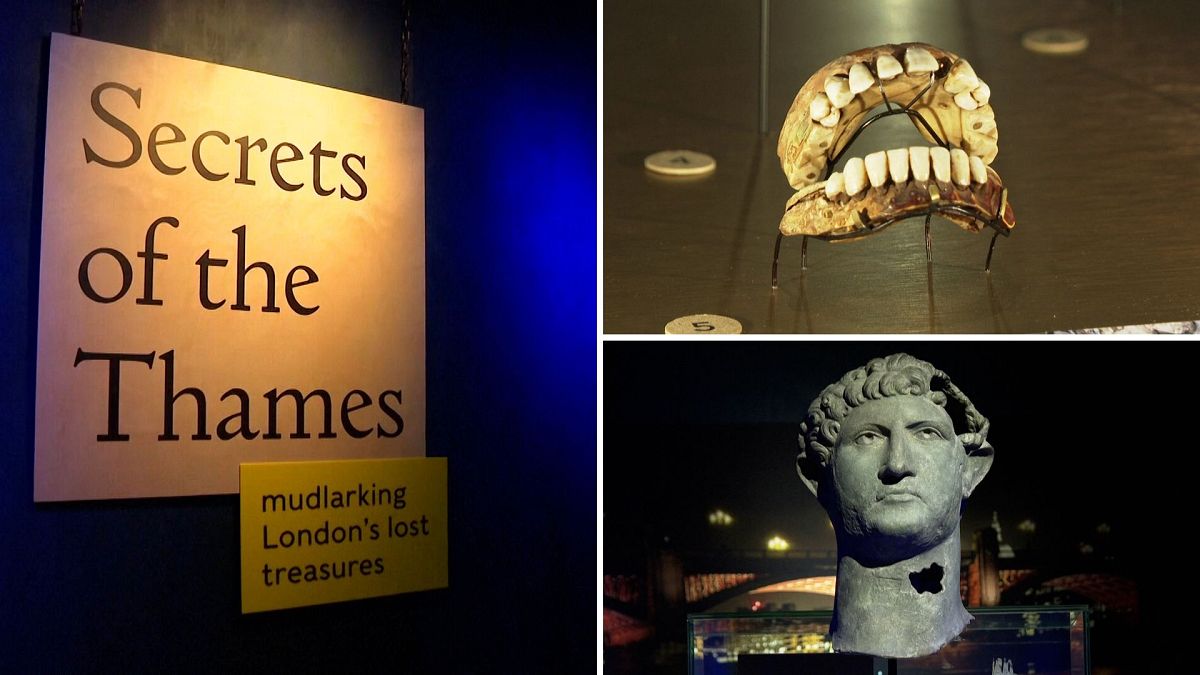Astana's Grand Mosque boasts an array of record breaking feats. Euronews Culture takes a tour around this architectural masterpiece.
Opened in 2022, Astana's Grand Mosque is the largest mosque in Central Asia. In fact, outside of the Middle East, there are few bigger than this.
Boasting many 'world-best' attributes, the mosque serves the city's mainly Sunni Muslim population and is also popular with tourists.
I spent an afternoon exploring this architectural giant and, whilst not at all religious, was absolutely bowled over by its beauty. It's undoubtable stature was matched by its splendour.
Let's take a closer look at what makes this Kazakh gem so special.
The biggest of its kind
The Astana Grand mosque is a visual delight, located on the edge of the city but visible from throughout. It was built at the request and under the supervision of Kazakhstan's first president, Nursultan Nazarbayev.
Another mosque in the city - the Hazrat Sultan Mosque, located in the centre of Kazakhstan's capital is the former largest in Central Asia. However, it lost its title in 2019 when Tajikistan completed the Dushanbe Grand Mosque, prompting Kazakhstan to begin its Grand Mosque project.
This white, blue and gold building spreads over 57,000m2 and features four 130m-tall minaret towers, a large central dome and 72 smaller domes.
The central dome, which claims to be the world's largest of its type, is around 83.2 metres high and 62 metres in diameter.
For context, that's just a few metres shorter than the height of St. Paul's cathedral dome in London and more than 20m larger in diameter than St. Peter's Basilica in the Vatican.
The blue-topped minarets are divided into five sections to represent the five daily prayers, known as Salah. However, some suggest it actually represents the five pillars of Islam - faith, prayer, fasting, charity and pilgrimage.
To enter the mosque, you pass through what is considered to be one of the tallest wooden doors in the world. Made from African hard iroko wood, it weighs one and a half tons and stands 12.4 metres tall.
Inside Central Asia's largest mosque
As is the case in all mosques, visitors and worshippers must take off their shoes before entering.
As you walk through the ornately decorated hallways towards the Big Hall, you pass by a café and several shops. I'm even told there's a TV studio somewhere in the depths of the building, though I didn't see it myself.
The windows in the hallways look into a central courtyard, known as a Sahan. Between the distinctly Kazakh golden designs on the windows (the patterns are also mirrored on the floor of the courtyard) and the white and blue contrasting building, this is a striking view.
The Big Hall, which is the men's prayer room, is home to the world's largest handmade carpet. This might seem like a niche badge of honour, but it's beautiful nonetheless.
Women can enter this room but there are some restrictions during prayer times.
On the opposite wall to the entrance to the Big Hall is the qibla wall. Qibla is the Arabic word for direction and shows worshippers the direction to face towards Mecca when praying.
The wall is spectacularly decorated with the 99 names of Allah lit up in gold and has become renowned for the high number of crystals set into it.
This wall can also be seen from the women's prayer room which is set on a mezzanine balcony above the men. From here, you can see more clearly the intricate design of the carpet.
Almost every wall inside Astana's Grand Mosque is covered in carvings, mosaics or gold.
The swirling patterns seen on the carpet are featured throughout the mosque and each shape in the design holds a meaning. Some of the most common shapes featured in Kazakh patterns are the ram's horn which signifies prosperity, kindness and strength and a bird which represents freedom.
What struck me most about the entirety of the Grand Mosque was the attention to detail and grandeur.
I personally love the classic white, turquoise and gold colour scheme that has become iconic for mosques in this part of the world.
But what felt special and rare for me was that such a modern and highly adorned building didn't feel gaudy and wouldn't be out of place amongst other more historic Islamic religious sites like the Registan in Samarkand, Uzbekistan, built in 15th-17th century.
Hannah Brown was a guest of Air Astana.
Watch the video above for a tour inside this architectural beauty.

 3 months ago
33
3 months ago
33






 We deliver critical software at unparalleled value and speed to help your business thrive
We deliver critical software at unparalleled value and speed to help your business thrive






 English (US) ·
English (US) ·